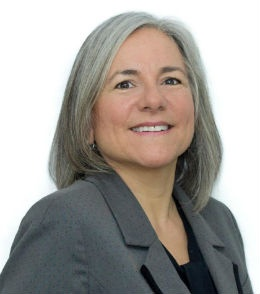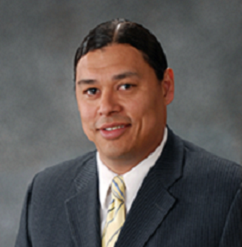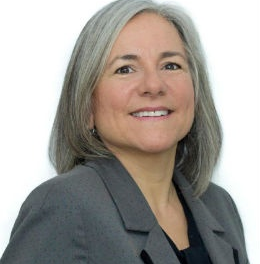 By Carol Ann Budd
By Carol Ann Budd
Education is the most powerful weapon which you can use to change the world. Nelson Mandela
Whether your child is eligible for band funding or not, part of nurturing your child likely includes saving for their education. Attending college or university is a key step in their development into mature responsible citizens.
Beyond RESPs – options to help what you’re saving match what you’ll need. You want the best for your child – and for plenty of powerful reasons, a college or university education is one of the best things you can do to give your child a great start in life. There’s the increased earning potential, of course – the average university graduate earns almost twice as much as someone with a high school diploma. Over a 30-year career, that could add up to $1.2 million of additional income1. There’s the increased opportunity for employment – seven out of ten jobs now require a post-secondary education and having a degree or diploma is bound to become even more important in the future2. And there are the valuable life lessons and relationships that are an essential part of the post-secondary experience.
RESPs are the first choice
For the vast majority of Canadians, a Registered Education Savings Plan (RESP) is the most effective way to create an education fund that grows to offset the future cost of education. However, when was the last time you checked to see how much of the total education bill your RESP will actually cover? Here are some sobering facts about the dramatically escalating cost of a post-secondary education:
-
On average, undergraduate tuition fees have almost tripled since 1990-913. A student attending a full-time college or university program today can expect to pay an average of $4,500 a year in tuition alone2.
-
Add books, supplies, transportation, and other living expenses and university students living at home spend an average of $4,500 on non-educational items, while students living away from home spend an average of $8,160 on non-educational items
-
The cost of mandatory supplies and equipment for college and trade schools varies widely and can be between $50 and $5,0002.
-
Schools are increasing fees for programs that may offer a larger financial payback upon graduation, such as law, medicine, engineering and dentistry2.
-
Nearly 50 per cent of Canadian college and university graduates leave school owing money for their education – with college graduates owing about $13,000 and university graduates almost $20,0005.
-
It is estimated that by 2025, the total cost of four years of undergraduate education away from home may be between $75,000 and $100,0002.
-
2001 Census Data – Statistics Canada. Average earnings for a High School graduate: $3 4,631; for a University graduate: $61,156. Assuming an average annual inflation rate of 2.69% (following the historical period of 1986-2005). The difference over 30 working years will total $1,259,248.
-
Statistics Canada, The Daily, October 18, 2007
-
Statistics Canada, The Daily, September 1, 2005
-
Statistics Canada, The Daily, September 10, 2003
-
Statistics Canada, The Daily, April 26, 2004
Beyond RESPs – further tax-efficient saving strategies
All this means is you need every advantage you can get when saving to help your children pay for a post-secondary education – to avoid burdening them with huge student loans or the extra stress of a part-time job during the school year. Consider the following investment strategies that can deliver important savings beyond RESPs.
Tax-free savings accounts (TFSAs)
TFSAs are very versatile. You can accumulate funds within your TFSA on a tax-free basis, and when your child goes to school, you can withdraw the money (plus any subsequent growth) on a tax-free basis to help finance your child’s education. Moreover, the amount you withdraw in a given year will be added to your TFSA contribution limit for the following year.
Insurance
Most people think of life insurance as basic financial protection for loved ones but a universal life insurance policy can also help fund your child’s education. A universal life insurance policy is a blend of life insurance protection and investment accounts. As the owner, you select a face amount of the life insurance, the type of coverage needed, and the name of the insured – your child, in this case. You pay the insurance premiums, which are usually quite low for a minor, and within certain limits you can make additional payments. Those additional dollars are then invested in a variety of investment funds to grow over the life of the policy on a tax-deferred basis – making this accumulation the policy’s primary benefit.
At any point after your child turns 18, you can choose to suspend further premium payments and transfer ownership of the policy to the child. This is a tax-deferred transfer that gives the child the ability to draw on the policy’s cash values to pay university costs. And, since the policy is now owned by the child, the taxable portion of any cash withdrawals is taxed at the usually lower marginal tax rate of the child.
Monthly Income Portfolios
This mutual fund option allows you to create a stable, tax-efficient, monthly cash flow that can be used to support your child. A portion of the monthly payout is treated as a return of capita
l and is not taxed in the year that it is paid out. This tax-deferral feature can reduce the amount of tax that you would pay compared to withdrawing funds from other types of investment vehicles.
Age 40 trust
If you are planning to put away a large sum of money, a properly structured age 40 trust can be an effective means of accumulating capital for education. Although more costly and complicated, it provides income-splitting opportunities so that capital appreciation may be taxed in the beneficiary’s hands, typically at a lower rate than you would pay. And when funded with a loan, you can retain access to the principal, giving you the flexibility to decide how the principal should be used, regardless of whether the beneficiary pursues a post-secondary education.
Key Points
-
Proper saving and planning could enable your child to choose the post-secondary school of their choice.
-
RESPs are an important part of saving for your child’s education, but they may not cover your child’s total education bill. \
-
Consider other tax-efficient strategies, like a TFSA, insurance or an Age 40 trust.
When the time comes, you want your children to be able to afford the college or university program of their choice, to follow the career they want and to obtain the earning power they desire.
The Canada Education Savings Grant and Canada Learning Bond (CLB) are provided by the Government of Canada. CLB eligibility depends on family income levels. Some provinces make education savings grants available to their residents. Commissions, fees and expenses may be associated with mutual fund investments. Read the prospectus before investing. Mutual funds are not guaranteed, values change frequently and past performance may not be repeated.
Note: This is a general source of information only and is not intended as a solicitation to buy or sell specific investments, or to provide tax, legal or investment advice. Carol Ann Budd, Consultant with Investors Group Financial Services Inc. is solely responsible for its content. For more information on your specific circumstances, please seek advice from a Chartered Accountant or Certified Financial Planner.




